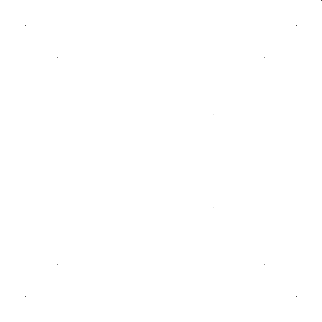MCB-DV-3037
Park
A performance somewhere between choreography and art installation, Park invites the audience to 'visit' a series of scenes from Adina's life. Moving through the rooms of an imaginary house, we gradually discover a woman in the grip of her daily rituals, under the dictatorship of domestic appliances and seemingly absurd actions. Thanks to their comforting repetition and their suggestion of order and duty, simple daily rituals can be the source of a sense of security and well-being, but the violence of their banality can also lead to terror.
A piece that questions the issues of the body in space, as a closed place. A fixed posture represented by a series of installations in which the body, linked to the misappropriation of objects, acts in a movement of non-productive continuity and trivialisation of the everyday. Questioning the body-machine relegated to a single place, Park also proposes a decontextualisation of the domestic sphere, placing the spectator in the position of experiencing the deliberately restricted dimension, the explicitly derisory character of the fragmentary occupation of space and time.
«The tableaux vivants that I have had the opportunity to present to date are all successive processes featuring a female character. Deprived of a name of her own, Adina is the fiction that has enabled me to explore different postures of women through a variety of bodily explorations. The first stages of my research led me to question the dimension of ritual, everyday and ordinary, which corresponds to the effects of social control exerted on women's bodies and inscribed in them. A woman of the interior, but also a 'private' woman (in the double sense of the term), the character of Adina is presented each time as perpetually confronted with the absolute impossibility of any form of exchange. Assigned to a residence - both temporally and spatially - the set of precise constraints imposed on this character places each spectator in the position of experiencing the deliberately restricted dimension, the explicitly derisory character of the fragmentary occupation of space and time: Adina is there, occupying in a delirious fashion a portion of the space in which she intervenes. The space as a whole remains empty, allowing a freedom of movement that contrasts objectively with the spatial impediment she faces as a result of the set-up in which I am staging her. It is in fact a space-time prey to a sudden movement of inescapable panic that I am trying to present. And a violence that seems to me to be that of the banal, but a banal realised in the exact time of its accomplishment, of its action, and implacably subjected to its own panic. It is only through public presentation, through performance, that an address to others (spectators) can come into play. As a factory-woman and alienated guardian of the home (lieu-tenante), Adina allows me to decontextualise the domestic sphere and reinscribe it in a space of representation. By setting up installations and various other devices that make it possible to identify the multiple rules, obligations and other obediences linked to the violence that every culture irremediably exerts, it is the instrumentalisation of the female body as such that I am attempting to approach in a variety of ways. But always at the end of public activities in the form of a journey, aimed at a singular reappropriation of the starting points of my work, enabling me to attempt to introduce critical deviations that are directly perceptible to the public.» Claudia Triozzi
CONCEIVED AND PERFORMED BY: Claudia Triozzi
LIGHTING DESIGN: Caty Olive
STAGE MANAGER: Sylvain Labrosse
PRODUCTION OF THE OPEN PLEASE MACHINE: Nicolas Darrot
COPRODUCTION: la Ménagerie de verre, les laboratoires d'Auberviliers
[msb]
Powered by Froala Editor
https://www.claudiatriozzi.art/park/ [2025-03-20]